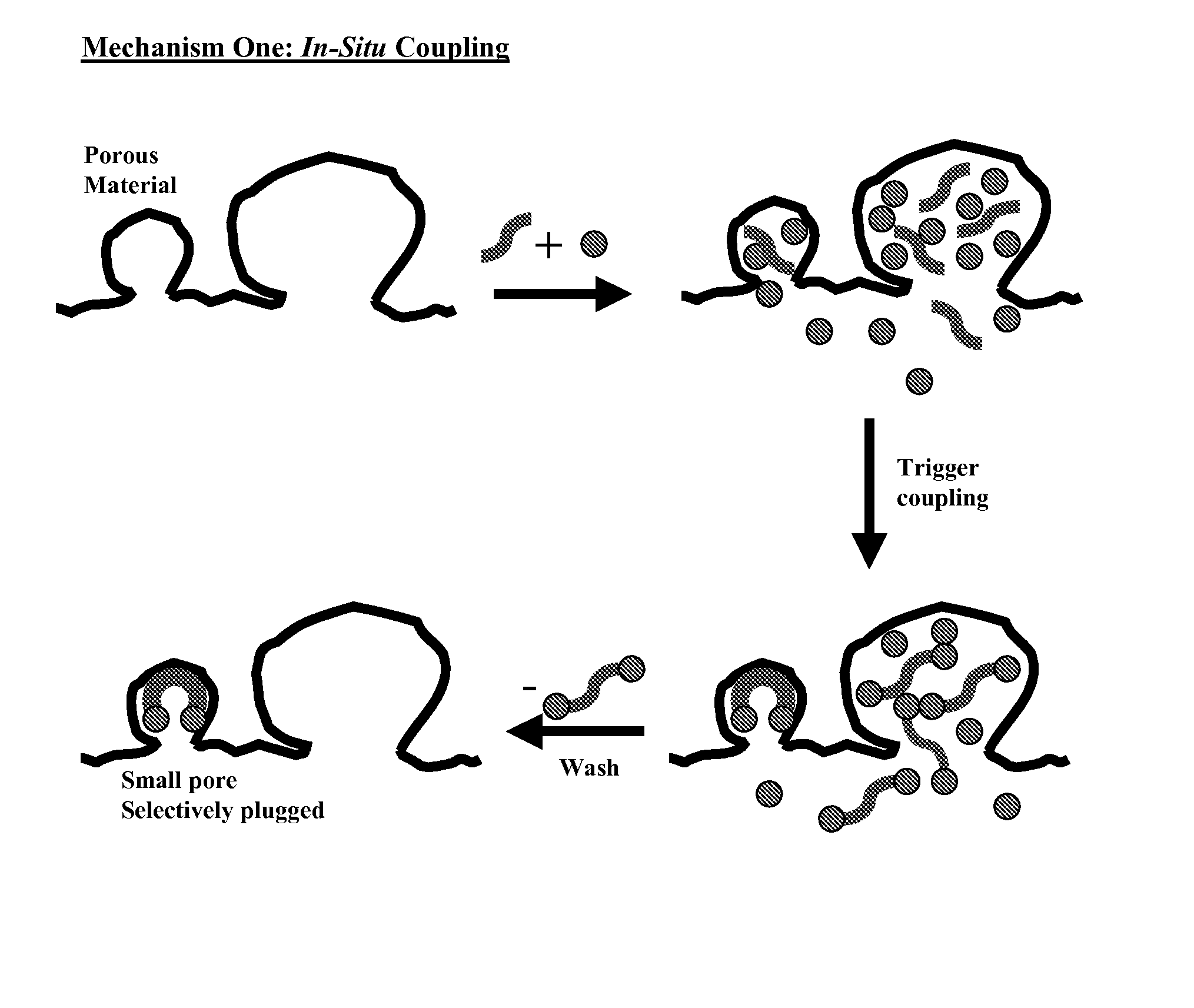Metal utilization in supported, metal-containing catalysts
a technology of metal-containing catalysts and catalysts, which is applied in the direction of metal/metal-oxide/metal-hydroxide catalysts, group 5/15 element organic compounds, physical/chemical process catalysts, etc., can solve the problems of reducing the yield of glyphosate, affecting catalyst performance and metal utilization, and introducing toxicity issues
- Summary
- Abstract
- Description
- Claims
- Application Information
AI Technical Summary
Benefits of technology
Problems solved by technology
Method used
Image
Examples
example 1
[0351]Three carbon supports were treated to determine the effectiveness of candidate pore blocking compounds. Support A had a total Langmuir surface area of approximately 1500 m2 / g (including total micropore surface area of approximately 1279 m2 / g and total macropore surface area of approximately 231 m2 / g). Support B had a total Langmuir surface area of approximately 2700 m2 / g (including total micropore surface area of approximately 1987 m2 / g and total macropore surface area of approximately 723 m2 / g). Support C had a total Langmuir surface area of approximately 1100 m2 / g (including total micropore surface area of approximately 876 m2 / g and total macropore surface area of approximately 332 m2 / g).
[0352]The candidate pore blocking compounds were 1,4-cyclohexanedione, ethylene glycol, and the diketal product of a coupling reaction between 1,4-cyclohexanedione and ethylene glycol (i.e., 1,4-cyclohexanedione bis(ethylene ketal)).
[0353]Support samples (30 g) were contacted with a solution...
example 2
[0359]Carbons A, B, and C (30 g) described in Example 1 were each treated by contacting with solutions of 1,4-cyclohexanedione in ethylene glycol (6 g / 40 g) at approximately 25° C. for approximately 60 minutes. Each carbon was also treated by contacting with solutions of 1,3-cyclohexanedione in ethylene glycol (1 g / 50 g) at approximately 25° C. for approximately 120 minutes. Carbon C was also treated by contacting with a solution of 1,4-cyclohexanedione in 1,2-propanediol (1 g / 50 g) at approximately 25° C. for approximately 60 minutes. Surface area analysis results are shown in Table 2. As shown, each combination of dione and diol provided reduction of micropore and macropore surface areas, and more particularly preferential reduction in micropore surface area.
TABLE 2% of original% of originalSampleDioneDiolmicropore SAmacropore SACarbon A1,4-Ethylene22.675.8disubstitutedGlycolCarbon A1,3-Ethylene58.484disubstitutedGlycolCarbon B1,4-Ethylene55.678.7disubstitutedGlycolCarbon B1,3-Eth...
example 3
[0360]This example provides transmission electron microscopy results (TEM) for a platinum on carbon catalyst prepared using Carbon B treated as described in Example 1 (mechanism one). The catalyst contained approximately 5 wt. % platinum and was prepared generally as detailed herein (e.g., by liquid phase deposition of platinum onto the treated carbon support), followed by treatment at elevated temperatures in a non-oxidizing environment. For comparison purposes, a catalyst including 5 wt. % platinum on Carbon B that was not treated was also analyzed. The TEM analysis was conducted generally as described by Wan et al. in International Publication No. WO 2006 / 031198.
[0361]The results for the catalyst including the untreated and treated carbons are shown in FIGS. 3A / 5A and 3B / 5B, respectively. These results suggest a reduction in relatively small platinum-containing particles (e.g., having a particle size less than 4 nm) for the catalyst prepared using the treated support.
[0362]The TE...
PUM
| Property | Measurement | Unit |
|---|---|---|
| temperature | aaaaa | aaaaa |
| temperature | aaaaa | aaaaa |
| temperature | aaaaa | aaaaa |
Abstract
Description
Claims
Application Information
 Login to View More
Login to View More - R&D
- Intellectual Property
- Life Sciences
- Materials
- Tech Scout
- Unparalleled Data Quality
- Higher Quality Content
- 60% Fewer Hallucinations
Browse by: Latest US Patents, China's latest patents, Technical Efficacy Thesaurus, Application Domain, Technology Topic, Popular Technical Reports.
© 2025 PatSnap. All rights reserved.Legal|Privacy policy|Modern Slavery Act Transparency Statement|Sitemap|About US| Contact US: help@patsnap.com



